Guns and the Link We Won’t Admit
There are without a doubt links among the extremists who have opened fire in this spring of slaughter, but we tend to ignore the most obvious point: We have decided to let just about anyone have a gun.There are without a doubt links among the extremists who have murdered three Pittsburgh police officers, gunned down a doctor who performed abortions in Wichita, killed a new Army recruit and wounded another in Arkansas and brought a demented hatred of Jews and blacks to bear in last week’s shooting at the U.S. Holocaust Memorial Museum.
These are all connected to the bloodshed in April at a community center in Binghamton, N.Y., where a distraught Vietnamese immigrant killed 13 people and then shot himself. And this horror is, in turn, linked to mass murders in such distant places as a North Carolina nursing home and a comfortable residential enclave in California’s Silicon Valley.
We are enduring a spring of slaughter.
After each dreadful crime we search for clues to the violence as if it were a discrete and disconnected event. It is the sour economy. Or the election of the nation’s first black president, unhinging the haters on the right. Or a mental illness that has gone untreated, if not altogether unnoticed, until it finds its expression in blood.
It is all of the above, but all of the above conveniently misses the most obvious point.
We have decided to let just about anyone have a gun. And we allow a system to flourish in which even those who are supposed to be barred from having weapons — James W. von Brunn, the alleged shooter at the Holocaust museum fits this category — are able to obtain them with ease.
Von Brunn, the elderly man accused of killing a Holocaust museum security guard, is an avowed hater of Jews, blacks and others. He proudly published his views on the Internet. He is also a convicted violent felon who served six years in prison for a 1981 attempted attack on the Federal Reserve, during which he supposedly intended to kidnap members of the central bank. Von Brunn entered the building armed with a pistol, a shotgun, a knife and a makeshift bomb that turned out to be fake. He was convicted of several charges, including attempted kidnapping while armed, assault with a dangerous weapon, carrying a pistol without a license, and possession of a banned weapon.
Though the Bureau of Alcohol, Tobacco, Firearms and Explosives is tracing the rifle von Brunn apparently used in the museum shooting, authorities say they cannot disclose results due to a 2004 law prohibiting the release of data on tracing guns used in crimes. Unsurprisingly, the law was put in place by congressional supporters of the National Rifle Association, and it prohibits even state and local law enforcement officials from receiving full trace data that would allow them to find a pattern of illicit sales or crack down on suspect dealers.
Perhaps von Brunn had the old weapon secreted away during his years in prison. But it is quite possible that he obtained it more recently, through the flourishing weapons bazaar that bypasses licensed gun dealers, the only sellers required to perform background checks.
Any “private seller” — an individual who places an ad, or sets up a table at a gun show or simply invites a neighbor over to view his wares — could have legally sold the gun and ammunition to von Brunn. “A classified ad, Internet ads — the seller wouldn’t be breaking the law unless he knew or had reason to know he had a conviction,” says Kristen Rand, legislative director of the Violence Policy Center. “And how would he?”
Richard Poplawski, the accused killer of the three Pittsburgh cops, passed the required background check conducted by a licensed dealer, according to the Pittsburgh Post-Gazette. He had a permit to carry concealed weapons despite a dishonorable discharge from the military and a domestic violence incident involving a girlfriend. Among the guns Poplawski reportedly used in his attack was an AK-47, a so-called assault weapon whose manufacture was banned in the 1990s, but is no longer.
In the years since that last, doomed effort at rational regulation, Congress under both Republicans and Democrats has repeatedly loosened gun restrictions to a condition of laxity so complete that we can hardly be said to regulate guns at all. Remember this the next time there is a mass murder and politicians assemble before the microphones to lament it.
Marie Cocco’s e-mail address is mariecocco(at)washpost.com.
© 2009, Washington Post Writers Group
Your support matters…Independent journalism is under threat and overshadowed by heavily funded mainstream media.
You can help level the playing field. Become a member.
Your tax-deductible contribution keeps us digging beneath the headlines to give you thought-provoking, investigative reporting and analysis that unearths what's really happening- without compromise.
Give today to support our courageous, independent journalists.
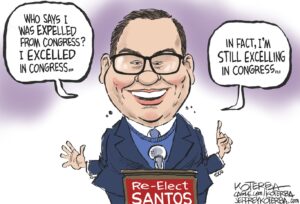
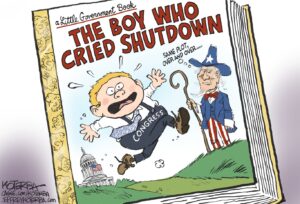
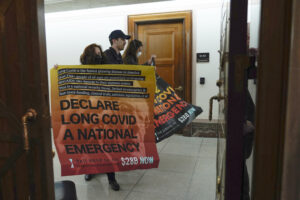

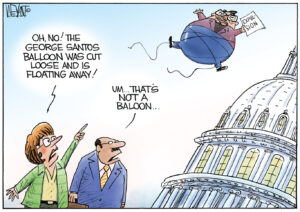
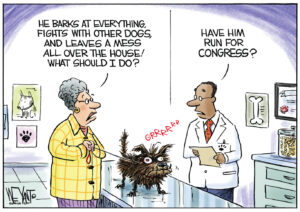
You need to be a supporter to comment.
There are currently no responses to this article.
Be the first to respond.